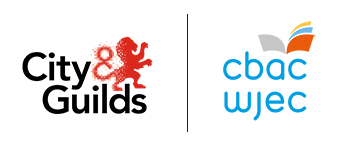




The training cycle demonstrates the processes required to deliver effective learning through training, and the cycle comprises of the following four elements:
It is important to identify the targeted audience prior to developing training sessions so that the delivery can be tailored to their needs which will enhance their learning.
Training is the act of teaching and delivering a specific behaviour or skill.
Facilitation is the act of helping other people to deal with a process without getting directly involved in the process and discussion. A facilitator plans, guides and manages a group to ensure the group’s objectives are met and promotes full group involvement.
The learning cycle is a concept of how people learn from experience. It will have several steps or phases, the last of which can be followed by the first. Examples could be:
Learning styles refer to a range of theories that aim to account for differences in individuals learning. These theories propose that all people can be classified according to their style of learning. A common concept is that individuals differ in how they learn. Examples of 7 learning styles are found below:
Learning methods are the different ways a learning outcome can be achieved and can include the following (the list is not exhaustive):
Learning resources are materials used to support learning and can include the following (the list is not exhaustive):
There are several barriers to learning which need to be overcome during the learning process.
Environment: The learning environment should be free from distraction and should be comfortable for the learners. Physical discomfort can be caused by uncomfortable seating, temperature, and accessibility to the environment.
Lack of confidence: There may be learners which lack confidence in learning the new skill and learners which lack confidence in their current skills, both acting as barriers to learning. The lesson delivery should aim to build confidence, and therefore the facilitator needs to encourage and motivate the learners.
Fear of failure: Fear of failure may be from previous bad learning experiences and a lack of confidence. To overcome this barrier, learners should be made aware of the learning outcomes and how they can be achieved. The learning experience should be supportive, and encouragement provided by the facilitator.
Resistance to change: There may be one or more participants in the learning audience who are resistant to change. A contributing factor may be their lack of motivation or misunderstanding of the learning outcomes. To enhance the learning experience several different methods and resources can be used to cater to the different learning styles. The aim of the session and learning outcomes should be made clear to demonstrate the purpose of the session. All participants should be encouraged to participate and reasons for resistance explored.
Physical and mental ill health: A learner’s physical and mental ill health may act as a barrier to learning due to pain, concentration and comfort. If their condition is significantly impacting on their ability to learn, consideration should be made to see if they can return to learning at a more suitable time.
Additional learning needs: Learners may have additional learning needs such as dyslexia. There may be a need to tailor the learning resources such as font and colour to cater to their needs. If a learner comes forward with an additional learning need a conversation is required about what works well for them so adjustments can be made.
A learning aim is a broad statement of intent which guides the learning and sets the learning goals.
SMART is an acronym used to develop clear and achievable objectives.
It is essential to gain information about the learners’ background and previous experience. This can be learning, skill and occupation experience. This knowledge can be gained prior to the learning session or at the start of the session. It allows the facilitator to tailor the session to the individuals in the session.
Mae'r cylch hyfforddi'n dangos y prosesau sydd eu hangen i ddarparu dysgu effeithiol drwy hyfforddiant, ac mae'r cylch yn cynnwys y pedair elfen ganlynol:
Mae'n bwysig nodi pwy yw'r gynulleidfa darged cyn datblygu sesiynau hyfforddiant er mwyn gallu teilwra'r ddarpariaeth i'w hanghenion a gwella eu dysgu.
Hyfforddiant yw'r broses o addysgu a darparu ymddygiad neu sgìl penodol.
Hwyluso yw'r broses o helpu pobl eraill i ymdrin â phroses heb gymryd rhan yn uniongyrchol yn y broses a'r drafodaeth. Bydd hwyluswr yn cynllunio, arwain a rheoli grŵp i sicrhau bod amcanion y grŵp yn cael eu bodloni ac yn hybu cyfranogiad llawn gan y grŵp.
Cysyniad yw'r cylch dysgu sy'n ymwneud â'r ffordd mae pobl yn dysgu o brofiad. Bydd yn cynnwys sawl cam neu gyfnod, a gall y cyntaf ddilyn yr olaf. Dyma enghreifftiau posibl:
Mae arddulliau dysgu yn cyfeirio at amrywiaeth o ddamcaniaethau sy'n ceisio esbonio gwahaniaethau yn y ffordd mae unigolion yn dysgu. Mae'r damcaniaethau hyn yn cynnig y gellir dosbarthu pob unigolyn yn ôl ei arddull dysgu. Un cysyniad cyffredin yw bod unigolion yn dysgu mewn ffyrdd gwahanol. Isod mae enghreifftiau o 7 arddull dysgu:
Dulliau dysgu yw'r gwahanol ffyrdd o gyflawni canlyniad dysgu, a dyma rai enghreifftiau (dydy'r rhestr ddim yn hollgynhwysol):
Deunyddiau sy'n cael eu defnyddio i ategu dysgu yw adnoddau dysgu, a dyma rai enghreifftiau (dydy'r rhestr ddim yn hollgynhwysol):
Mae angen goresgyn llawer o rwystrau rhag dysgu yn ystod y broses ddysgu.
Amgylchedd: Ddylai'r amgylchedd dysgu ddim cynnwys unrhyw beth allai dynnu sylw'r dysgwyr, a dylai fod yn gyfforddus. Mae eistedd yn anghyfforddus, tymheredd, ac amgylchedd anhygyrch yn gallu achosi anghysur corfforol.
Diffyg hyder: Efallai y bydd gan rai dysgwyr ddiffyg hyder i ddysgu'r sgìl newydd ac eraill ddiffyg hyder yn eu sgiliau presennol; mae'r ddau o'r rhain yn rhwystrau rhag dysgu. Dylid cynnal y wers gyda'r nod o fagu hyder, ac felly mae angen i'r hwyluswr annog a chymell y dysgwyr.
Ofn methu: Mae ofn methu'n gallu bod oherwydd profiadau drwg o ddysgu yn y gorffennol, a diffyg hyder. I oresgyn y rhwystr hwn, dylid sicrhau bod dysgwyr yn ymwybodol o'r canlyniadau dysgu a sut i'w cyflawni nhw. Dylai'r amgylchedd dysgu fod yn gefnogol, a dylai'r hwyluswr annog y dysgwyr.
Gwrthwynebu newid: Efallai y bydd un neu fwy o gyfranogwyr yn y gynulleidfa sy'n dysgu yn gwrthwynebu newid. Gall eu diffyg cymhelliant, neu gamddealltwriaeth o'r canlyniadau dysgu, gyfrannu at hyn. I wella'r profiad dysgu, gellir defnyddio llawer o wahanol ddulliau ac adnoddau i ddarparu ar gyfer y gwahanol arddulliau dysgu. Dylid egluro nod y sesiwn a'r canlyniadau dysgu i ddangos beth yw pwrpas y sesiwn. Dylid annog pob cyfranogwr i gymryd rhan, ac archwilio eu rhesymau dros wrthwynebu.
Afiechyd corfforol a meddyliol: Gall afiechyd corfforol a meddyliol dysgwr fod yn rhwystr rhag dysgu oherwydd poen, canolbwyntio a chyfforddusrwydd. Os yw cyflwr y dysgwr yn cael effaith sylweddol ar ei allu i ddysgu, dylid ystyried gweld a all ddychwelyd at ddysgu ar adeg fwy addas.
Anghenion dysgu ychwanegol: Efallai y bydd gan ddysgwyr anghenion dysgu ychwanegol fel dyslecsia. Efallai y bydd angen teilwra'r adnoddau dysgu, fel y ffont a'r lliw, i fodloni eu hanghenion. Os bydd dysgwr yn datgelu bod ganddo angen dysgu ychwanegol, bydd angen sgwrs am yr hyn sy'n gweithio'n dda iddo er mwyn gallu gwneud addasiadau.
Mae nod dysgu yn ddatganiad eang o fwriad sy'n arwain y dysgu ac yn gosod y targedau dysgu.
Mae CAMPUS yn acronym sy'n cael ei ddefnyddio i ddatblygu amcanion clir a chyraeddadwy.
Mae'n hanfodol casglu gwybodaeth am gefndir y dysgwyr a'u profiad blaenorol. Gall hyn fod yn brofiad o ddysgu, sgiliau a galwedigaeth. Gellir casglu'r wybodaeth hon cyn y sesiwn dysgu neu ar ddechrau'r sesiwn. Mae'n caniatáu i'r hwyluswr deilwra'r sesiwn i'r unigolion yn y sesiwn.